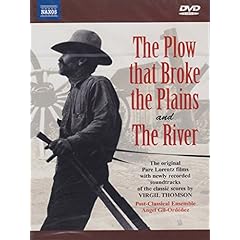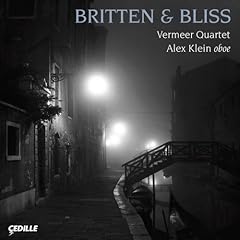It seems that conceptual artist Jonathon Keats has created a cell-phone ringtone based on John Cage’s 4’33” called My Cage (Silence for Cellphone), which is exactly what it sounds like: “a continuous stream of silence produced on a computer, and compressed to standard ringtone format.” It’s both hilarious and brilliant. (Thanks to Kyle Gann for bringing it to my attention.)
The point of Cage’s original piece is that during the time period the audience is forced to think about silence (and the lack thereof) and music’s relationship to silence in a new way. Ambient environmental sounds are recontextualized and turned into music because the composer declares it to be so. “Silence” is recontextualized as “not-so-silent-after-all,” and “Music” is recontextualized away from its usual functional existence as sounds organized by the composer to provide enjoyment to something that can be created by fiat — and because the sounds heard in 4’33” are not controlled by the composer the composer’s role as “creator of enjoyable sound” is removed.
The My Cage ringtone quite ingeniously recontextualizes those and other recontextualizations. Stepping back a bit, “ringtones” themselves are an interesting recontextualization and conversion, taking “art” and moving it over into an almost entirely functional category. In fact, the ringtone is so non-art that the listener is expected to interrupt it in order to move on to the goal of answering the phone. Furthermore, the selection of a personal ringtone is, I would suggest, much more a fashion statement than a selection for direct personal enjoyment: the owner of the phone never bothers to listen to the ringtone all the way through, but when the phone rings his or her identity as a “person who likes that song” is broadcast to everyone else in the room. It’s analogous to wearing clothing that provides no added physical comfort to the wearer but advertises the wearer as a person who wears that kind of fashion.
The fact that the phone user doesn’t hear the My Cage ringtone makes it useless for its alleged primary function (i.e. alerting the owner to an incoming phonecall) and its secondary function of projecting identity (since nobody else can hear it either). In fact, the whole 4’33” is likely to play all the way through, since the phone’s owner won’t know to answer the phone an interrupt it. Cage’s recontextualization of silence/environmental noise is taken to a new extreme — in the original, the audience knows when the “music” is happening, but with the ringtone the “audience” has no idea until they see the “missed call” message on the phone’s screen. The sounds of the environment were converted from noise to music and back again without anyone knowing it. This also introduces the interesting possibility of experiencing art exclusively in hindsight — most other art is experienced in realtime first, but since the “audience” doesn’t know when the art is taking place until it’s over, the only access to it is in memory. Which itself is a recontextualization of memory, since the conception of the memory of that period of time has to be changed in light of the new information.
Not only is the composer’s customary role as “organizer of pleasant sounds” removed, as in the original, but the audience’s usual role as “people who experience art, often by deliberate choice” is also broken down. The audience has no choice in when the “performance” takes place, and the owner doesn’t even know he is the audience for a piece of music until after the fact. Most of the people in the room with him never find out that they were an audience and that the enviromental noise they heard was, for four minutes and 33 seconds, music.
The piece also makes some interesting statements about modern consumer culture. The title My Cage seems a deliberate parody of names like “MySpace” and “My Computer,” emphasizing participation in popular and consumer culture. In fact, I would suggest that part of the Art of the piece is its existence in the commercial marketplace — the fact that it is acquired and distributed in the way that other ringtones are bought and sold is a part of the concept. (My Cage is free, and while I think the statement would be stronger and clearer if it were for sale, I think it’s fair to characterize the acquisition of free things, like mp3s from MySpace or videos from YouTube, as part of “consumer culture.”) And since My Cage is so useless at its nominal primary functions (notification of incoming calls and projection of the owner’s identiy), the new primary function of the piece is to provide the owner with the knowledge that by participating in this act of consumerism he is also participating in art. We are used to the idea of the buying and selling (or giving and receiving) of art objects, but not in having that transaction be artistically participatory itself. My Cage is a highly effective recontextualization of the act of consumption into consumption-as-art, and in fact the title My Cage effectively describes the fact of participation: MySpace isn’t just a website, it’s a website where I have my own section; My Computer isn’t just A Computer, but it’s the one I use and change. My Cage isn’t just a piece of conceptual art, but it’s an art project in which I am a performer.
The fact that Wired Magazine reproduced Mr. Keats’s press release is itself not merely a PR success, but a part of the Art itself. Most people will never download and use this ringtone, but most people know 4’33” by reputation only. 4’33” achieves its intended effect on the general conception of the meaning of art and silence just by having its existence known. My Cage does the same, while simultaneously making that infection of knowledge of the existence of the piece part of the art. In fact, by reviewing it I too am a performer in the work.


 Rilke Songs; The Six Realms; Horn Concerto
Rilke Songs; The Six Realms; Horn Concerto






 Quartetset; Quiet Time
Quartetset; Quiet Time